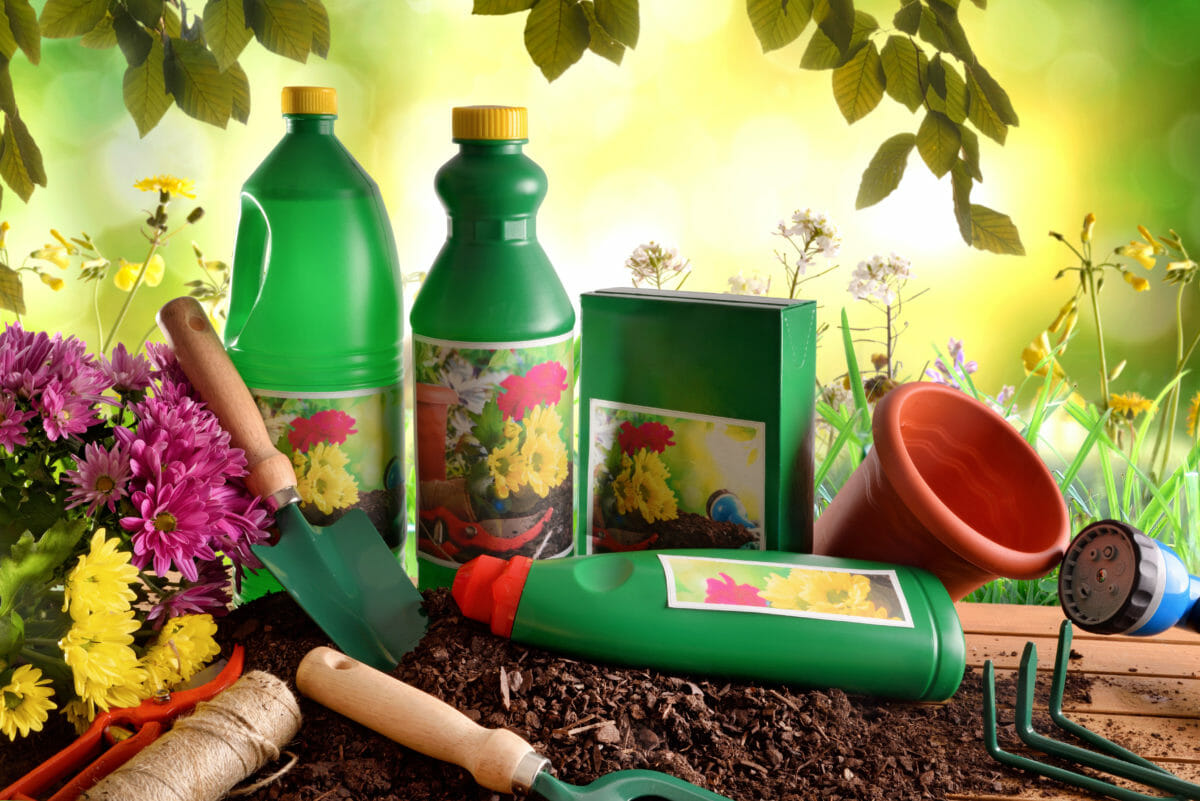It's not as hard as those jargon-heavy labels would make you think.

Those Three Letters: N-P-K
Those three letters stand for nitrogen, phosphorus and potassium, the three most important plant nutrients. The three numbers you see on nearly every fertilizer product refer to the percentage of N-P-K they contain. For example, a 10-5-2 fertilizer is 10 percent nitrogen, 5 percent phosphorus and 2 percent potassium; the rest of the product is inert materials.
Breaking Down the Label
Much of the what’s found on a fertilizer label is pure marketing jargon. There is virtually no difference between products for lawns, roses, vegetables and herbs, etc. Yes, you will see different N-P-K ratios on the labels, but unfortunately, that doesn’t actually mean the ratio is the right one for your particular roses, grass or vegetable beds – it’s simply a ploy to sell more fertilizer.
Lawns don’t actually need a different N-P-K ratio than roses. In fact, the vast majority of plants need more or less the same quantities of nutrients; whether they have them or not depends on the particular soil they’re growing in. Thus, the only way to know the precise N-P-K ratio you need is to test your soil and then formulate a custom fertilizer based on the nutrients that are deficient.
But it doesn’t have to be that complex. Nitrogen availability is almost always the limiting factor in plant growth and health. Which is why the N number is usually highest. In most cases, you’ll have success using products with an N value in the 5 to 10 range and P and K values of 1 to 4. Using products with nitrogen concentrations above 10 percent greatly increases the likelihood of over-fertilizing, which can harm the plants – plus any fertilizer that isn’t readily absorbed will eventually leach away and pollute nearby water resources.
The one exception are fertilizers for special plants like citrus, palms, orchids and African violets. These typically contain additional micronutrients (beyond N, P and K) that are helpful for growing those particular species.
Liquid, Pellets or Spikes?
Choosing from among these three forms of fertilizer is largely a matter of personal preference, though there are a few practical considerations. The most important has to do with how quickly the nutrients are released. Liquid nutrients are available immediately, while granular or pelleted fertilizers are “slow release,” so they last longer in the soil. Spikes offer the slowest release of all, but they’re really designed for houseplants; it isn’t practical or economical to put a spike in the ground next to every single plant in a large garden.
Bulk bags of pelleted or granular fertilizers are by far the most economical option, though the organic ones are notorious for inciting pets to sniff, dig and roll in the tantalizing animal products that they contain. Liquid fertilizers are an option to prevent this, though you can always convert granular fertilizers to liquid form by grinding them up and soaking them in a bucket of water for a few days.
I might go for a liquid fertilizer since you mentioned that it’s a matter of personal preference. Since you mentioned that citrus plans need some additional micronutrients, I might choose a fertilizer from a manufacturer that I can use for my orange trees. If nitrogen, phosphorus, and potassium are products that I’ll need to keep them healthy, I’ll try my best to look at the label and see how much they contain before I purchase them for my farm.